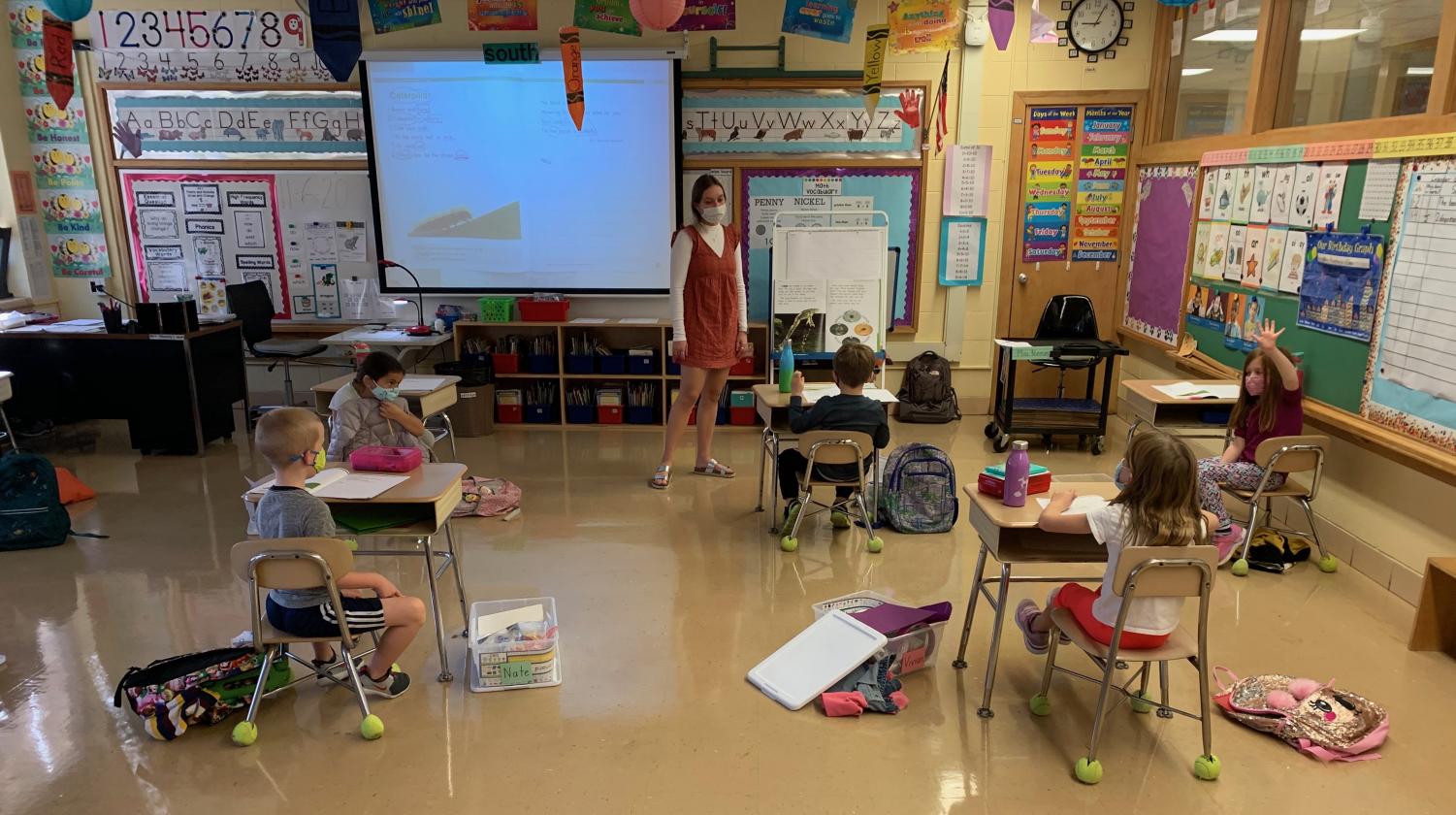Introduction to Teaching students learn the importance of flexibility within hybrid schedule
November 18, 2020
Preparing senior level students who aim to become some of the next generation’s educators is no easy task. The COVID-19 pandemic has created uncommon challenges for the students but has given them a new outlook on what it means to be a teacher.
DGN offers the Introduction to Teaching (ItT) program geared towards students who are interested in taking the career path of being in the field of teaching, with different types of classroom settings. In the student’s junior year, they will apply for the program and then curate a list of possible classroom settings they would be interested in teaching.
Students are placed in their appropriate classroom settings and then are able to learn from a mentor District 58 teacher. Scheduling can be a challenge any school year but fortunately for the program coordinator, Dr. Frank Piekarz, it hasn’t raised too many difficulties.
“We did have a few mentor teachers that we’re concerned about whether or not they would be able to work with their classes and also take on one of the student interns, and I think that makes logical sense,” Piekarz said, “I think all teachers didn’t really know what to expect coming in.”
The Intro to Teaching program has shifted its classes to accommodate district guidelines and local policies when it comes to social distancing and safety precautions. District 58 has put in place similar safety measures as District 99, like wearing masks at all times, social distancing, and consistent sanitizing. Some teachers have felt comfortable letting students from North into their classrooms while others asked them to stay home and teach via Zoom.
The lack of face-to-face connection has left some students having to search for non-traditional ways to keep students engaged.
“None of the kids would answer my questions so I had to get creative with the way I called on them. It actually ended up working. I would go like, ‘Put your hand up if you’re over 5’5’ and then they would put their hands up and I would pick one of them. It was silly things like that, but it got them to participate,” senior Joe Paveleck said.
Senior Hailey Mendez has had the opposite experience with her first-grade students at Pierce Downer Elementary School.
“A lot of them like to talk at random times and unmute themselves, which is completely different than in high school. I think that’s something I was not really expecting,” Mendez said.
During hybrid learning, students have had to learn the importance of flexibility. With the flexibility to switch classes around, overcoming the difficulties of encouraging students to participate, and working with students through the computer, students are learning first hand what it means to be a teacher.
“My group of seniors in the Intro to Teaching class will probably be thinking a little more flexibly about their work in our specific class and with the rest of their schooling and maybe going forward as undergraduate students,” Piekarz said, “There is a learning that goes on there and it is not necessarily a school subject but in some ways, it is equally important as any school subject. Just being able to be flexible while you are doing your work, whatever that work is.”
Senior Quinn Mackenzie has had to stay flexible with his Zoom locations over the past few weeks because of a lack of room space at Herrick Middle School.
“There is an issue with room space right now because if my mentor teacher and I are in the same room we still have to have our masks on, even if we are on separate sides. Since she is a science teacher she has her science supply closet, so I would normally just Zoom from there, but right now I am Zooming from home,” Mackenzie said.
Senior Raegan Novak had the opportunity to work with band students at Herrick Middle School and has been pleased with the way the outcome of that class has been going so far this year.
“I was never 100% sold on going into music education. There is this thing in the back of my mind saying like ‘well what if I want to go to culinary school in Canada instead’, but being in this class made me realize that this is what I want to do,” said Novak.
Laura Novotny, a first-grade teacher at Lester Elementary, explains how having a student teacher in person and the students remotely help her better guide her student teacher.
“During that asynchronous time, [student teacher] is just alone in the room with me. I actually found that really helpful because I can quickly and discreetly explain things to her,” said Novotny, “so if we are on with the kids for thirty minutes and then hang up and she’s kind of wondering why a student responded that way or what they were referring to I can give her that information quietly without the other kids hearing it, which I have found that it really helps.”
